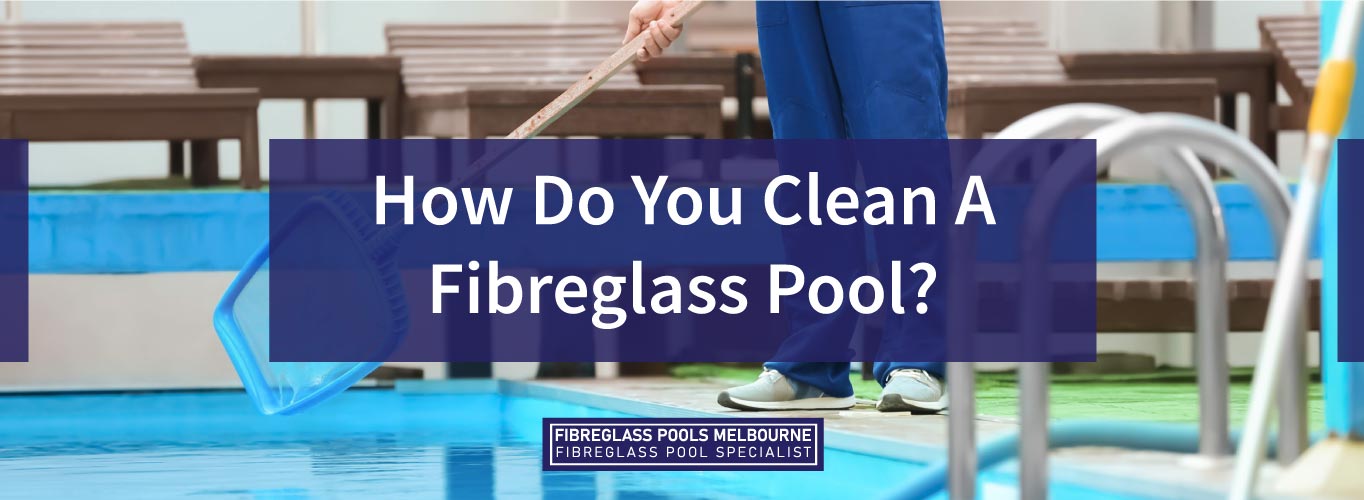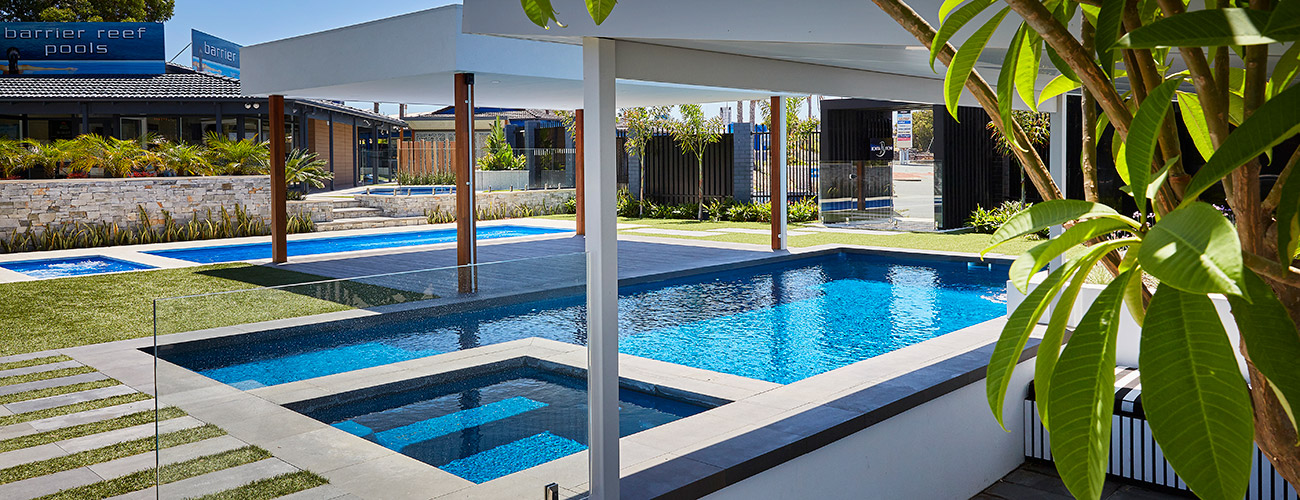How Do You Clean A Fibreglass Pool?
Fibreglass pools add an element of luxury to your house. The pool can also be a great way to spend fun times with your family and friends or relax just by yourself. Swimming is also a fantastic way to keep yourself fit. However, for your fibreglass pool to maintain its luxurious looks, you must also ensure that you keep it clean. Besides being extremely long-lasting, fibreglass pools are also easy to maintain. Let’s take a look at the things you must know to keep your pool clean.

Cleaning The Fibreglass Waterline
Sometimes a ring forms around the pool due to metals naturally found in water combined with body oil and sunscreen that have been exposed to the water. It is possible to eliminate this ring by adjusting the pool filter, making it work faster than normal. Run the filter until the water gets clearer, and then add chlorine. Chlorine will clean the debris from the water and sanitise it.
If there are visible ring stains on the rim of your fibreglass pool, you can use a sponge and some dishwashing soap to scrub the stains away. Light pool stains can also be removed by pool tile cleaners available in the market.
Cleaning An Empty Fibreglass Pool
Cleaning your pool is much easier when empty, especially the sides and the bottom of the pool. However, it is unnecessary to drain your fibreglass pool unless there is a lot of debris at the bottom of the pool. There are specially formulated cleansers available for fibreglass pools. You may use them to keep your pool sparkling clean.
Also, it is recommended that you clean light stains as soon as they appear. Once they get darker, it is harder to clean.
Removing Rust Stains
Brown stains in and around your fibreglass pool are an indication of iron buildup. If the rust stains are small, rubbing a Vitamin C tablet directly on them should make them go away. Use a brush to scrub the stains and your pool will be good as new. However, if the rust stains are bigger or more persistent try rubbing a chlorine tablet directly on the stain.
If there is copper in the water, you may see turquoise stains in your pool. You can use pool cleaners to make these stains go away.
Removing Yellow Stains and White Buildup
If you see yellow stains on fibreglass pool surfaces, they are most likely caused by pollen from plants around the pool. Metal and mustard algae also leave yellow stains at times. If the yellow stain is due to mustard algae or pollen, rubbing a pumice stone over it should get rid of it. If it doesn’t, the stain is most likely due to some metal present in the water. You can rub a Vitamin C tablet or a chlorine tablet on the stain to remove it.
The white buildup is most likely due to calcium deposits. Scrub the white buildup with a pumice stone to get rid of it. If it still does not work, you may need calcium scaling treatments to clean your pool.

Acid Washing A Fibreglass Pool
Did you know that you could acid wash your fibreglass pool without draining it? To do it safely, you must use ascorbic acid. However, ascorbic acid changes the pH and alkalinity of the pool during the cleaning process and after it. Make sure that you check the pH levels and alkalinity of the water before stepping into the water.
Apart from the methods mentioned above, there are several commercial products available in the market to thoroughly clean your fibreglass pool. You can also use ceramic cleaners or vinyl cleaners to remove stains from your pool. However, make sure that they are not very abrasive. You can also use oxalic acid to remove fibreglass pool stains, but it can make the water cloudy.
Tips To Keep Your Fibreglass Pool Clean
Fibreglass pools are immensely popular because they are easy to install, clean, and maintain. In fact, fibreglass pools require a lot less cleaning than other pools do.
Here are a few useful tips you can follow to keep your pool clean throughout the year:
Keep Your Pool Chemicals Balanced
Stains start to form when the pH, alkalinity, and chemical levels in your water are unbalanced. Testing your water regularly is a great way to maintain a good water balance. There are many test kits available in the market that can test for pH, alkalinity, and chlorine levels. You must also check for metals and calcium hardness at least once a month.
The pH level of your pool should be between 7.2 and 7.6. The alkalinity levels should be around 80 to 120 parts per million (PPM), and the chlorine levels should be slightly under 3.0 PPM. When the pH level is too high, it starts to leave scum marks at the edges and the bottom of the pool.
You must use a good quality filter pump to maintain the water quality of your pool. It is a good idea to run the filter pump at least once during the day to ensure there are no imbalances in the water.
Empty The Skimmer Basket Regularly
The skimmer basket installed on the side of the pool skims the pool surface before debris and contaminants become heavy and settle at the bottom of the pool. Empty the skimmer basket regularly to ensure that it does its work effectively.
You can also use a pool leaf scoop with a long handle to remove dirt and leaves from anywhere in the pool. Remove debris from your pool regularly because a dirty pool looks bad and is also unhealthy to swim in. You can use a pool vacuum specially designed for fibreglass pools to clean heavier deposits of debris and dust from the bottom of your pool.

Clean Stains As They Appear
Stains mar the aesthetics and visual appeal of your fibreglass pool and mostly appear when there is an imbalance in your pool water. When there is a high concentration of metals in the water, it can leave different coloured stains. For instance, iron leaves reddish-brown stains, while copper leaves bluish-green stains. Green and brown stains can also appear due to dirt, algae or leaves.
Clean the stains as soon as you see them. The lighter they are, the easier they are to clean. There are many pool cleaners available in the market that you can use to keep your pool clean and sanitised.
Use A Pool Cover
One of the easiest ways to prevent your fibreglass pool from getting stained is to use a pool cover. If you are pressed for time, invest in a good quality pool cover as it will stop dirt, leaves, and other debris from falling into your pool, reducing the need to clean it often. So do i really need a pool cover?
Only Use Products Designed For Fibreglass Pools
To maintain the longevity of your pool, only use products that are specially made for fibreglass pools. Other products may contain harsh chemicals that can potentially damage or stain your pool. Also, don’t use brushes with stiff bristles as they may scratch the surface of the pool.
Fibreglass pools require the least amount of cleaning and maintenance compared to other pools. Maintaining a regular cleaning timetable can keep your pool clean and healthy all through the year.
